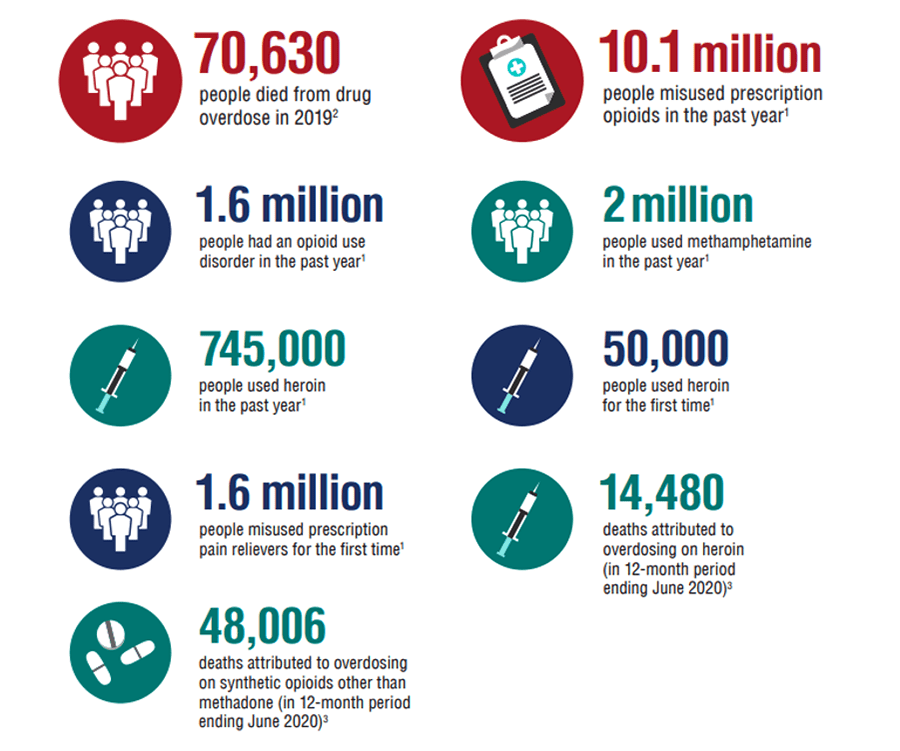The Opioid Epidemic & Medication-Assisted Treatment

In 2017, the Department of Health and Human Services (HHS) declared a public health emergency, commonly referred to as the “Opioid Epidemic”. In response to the increasing rates of opioid-related deaths and Opioid-use Disorder (OUD), the government launched several initiatives to combat the crisis. Despite these reform efforts, over two million Americans suffer from OUD, which includes opioid pain medications and heroin.
Although research shows a strong correlation between substance abuse and the criminal justice system, addiction can affect people of all ages; racial, ethnic, sexual and gender minorities; income classes; and geographic areas. If you struggle with opioid addiction, it’s critical to start or continue treatment. Treatment can include behavioral therapy, medication, or a combination of the two. Learn about the different treatment options and what’s available in your area. Recovery is difficult, but possible.
Discover Treatment Options
There are many free or low-cost options to help you gain and maintain sobriety. One of the most successful treatments for OUD is Medication-assisted Treatment (MAT), the use of medications in combination with counseling and behavioral therapy. Commonly used medications are actually opioids and include suboxone, methadone, and buprenorphine. These options help withdrawal symptoms, relieve cravings, and normalize body functions.
Naltrexone is a non-opioid option and the preferred medication for people hesitant about staying on opiates. Doctors typically administer a monthly Vivitrol injection, often covered by insurance. Visit HHS to learn about payment options and insurance coverage. Another non-opioid option is Naloxone, used in Narcan, a nasal spray administered to reverse a drug overdose. Find a pharmacy offering Narcan in your area.
The ultimate goal of MAT is recovery, including the ability to live a self-directed life. This treatment approach has been shown to:
- Improve survival
- Increase retention in treatment
- Decrease opiate use and other criminal activity among people with a substance abuse problem
- Increase the ability to gain and maintain employment
Ignore the Stigma Around MAT
It’s normal to struggle with the decision to start treatment. There is the feeling that “it’s just replacing one drug for another”, “I don’t want to feel like a zombie”, or “I don’t want to be on a medication forever”. These are normal concerns. Each medication offers specific advantages for patients and can be explained thoroughly by your provider. Your treatment plan will depend on several factors such as type of substance being used, addiction history, and withdrawal severity. Don’t dismiss MAT before getting all the facts.
Find Help Today
You may find yourself asking, where do I start in researching options? The Substance Abuse and Mental Health Services Administration (SAMHSA) website provides a treatment program directory, service locator, and a national helpline (1-800-662-HELP). Calls are 100% confidential. MAT is often covered by insurance, and there are also programs to assist with payment when insurance is not an option. OUD affects millions, but there are effective options available to help individuals beat the addiction!



